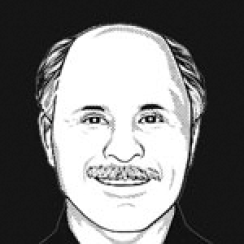It has become widely accepted wisdom that institutions are accounting for an increasing share of hedge fund assets and will continue to do so in the future.
Too bad it is wrong.
Two recent reports confirm that institutions are reducing their share of assets while wealthy individuals are rapidly playing an even larger role at hedge funds. And this sits very well with hedge fund managers.
The reports also suggest that the recent trend among investors to pour a majority of new money into funds with more than $5 billion in assets could be short lived.
Let’s look at the data.
Greenwich Associates recently noted in a report that in 2010, endowments and foundations represented 12 percent of assets under management among hedge funds with more than $1 billion under management. This is down from 14 percent in 2009.
One billion dollars is a fair benchmark to use since most institutions are not permitted to invest, or are not comfortable investing, in small hedge funds.
Drilling further through Greenwich’s data, most sub-groups of institutional investors also reduced their market share.
For example, corporate pension funds accounted for 8 percent of assets in 2010, down from 9 percent in 2009.
Funds of funds saw their share drop from 26 percent to 23 percent. Corporate pension funds reduced their exposure to 8 percent of the industry’s total in 2010 from 9 percent in 2009.
The only institutional group that increased its share of hedge fund AUM over the most recent year was public pension funds, which grew to 9 percent of total assets in 2010 from 8 percent in 2009.
“Greenwich Associates’ research among pension funds in Europe and the United States shows that, while many public pension funds are looking to close serious funding shortfalls by increasing allocations to hedge funds and other investments with the potential to deliver relatively high levels of alpha, corporate pensions are acting to ‘de-risk’ portfolios,” says Greenwich Associates Product Manager Kevin Kozlowski, in a press release.
At the same time, high-net worth individuals and family offices increased their share of total AUM among hedge funds with at least $1 billion. In 2010, high net worth individuals and family offices accounted for 24 percent of assets, up from 21 percent the prior year, according to Greenwich.
Meanwhile, they account for 61 percent of assets among funds with less than $100 million in AUM.
A separate study released earlier this week also suggests that individuals are playing an even greater role than Greenwich’s analysis suggests.
According to a new report from Spectrem Group, half of all households with a net worth of $25 million or more now own hedge funds. This is way up from just 35 percent of the wealthiest households invested in this alternative asset class. Spectrem says the mean hedge fund holding for this group is $4.6 million.
The rich crowd has also embraced other alternative investments. About 56 percent are invested in private equity and 52 percent in venture capital, up from 39 percent and 37 percent, respectively, in 2007. High net worth individuals are apparently indicating they are willing to take more risk.
At least one prominent hedge fund manager likes the trend toward high net worth individuals. He calls their money “sticky,” meaning they are not as likely to flee after one year of sub-par performance.
For years, experts have complained that the funds of funds are the worst offenders.
These trends are also a good omen for small hedge funds, which have been scrambling of late as most new money this year has poured into funds with $5 billion or more.
This makes little sense. As I pointed out a while ago, the newer, smaller hedge funds are still the best place to get the highest returns.
According to Ken Heinz, president of HFR, funds that have been around for less than 24 months have gone on to outperform those already in existence for more than 24 months for virtually every time period.
For example, the annualized return for new managers over the past three years is 7.77 percent versus 0.30 percent for established managers. The difference over the five-year period is 11.4 percent vs. 5.6 percent while for 10 years it is 16.6 percent vs. 10.4 percent.
No wonder the smaller individual investors seem more interested in hedge funds these days than institutions.






